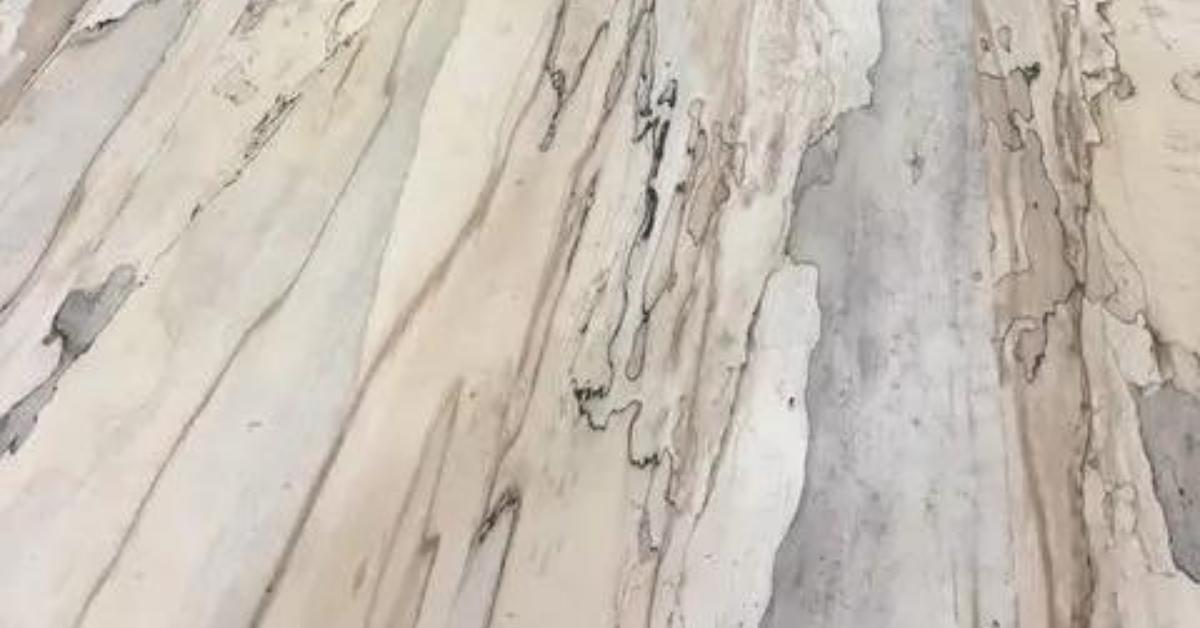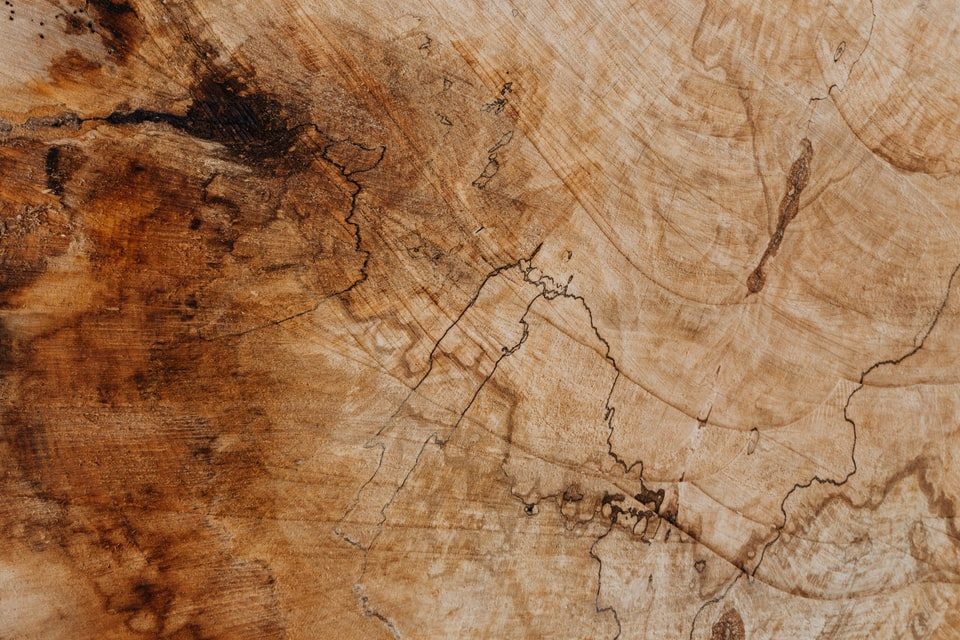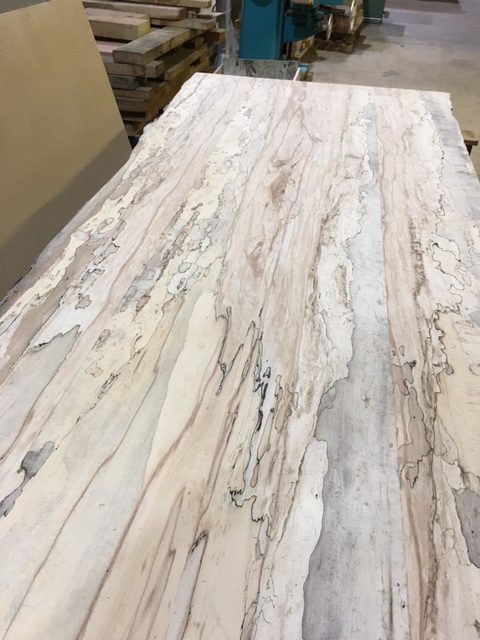Spalted Wood: Beautiful, But Is It Safe?
By Simon Smith
What is Spalted Wood?
Spalting is any kind of wood colouration that is caused when fungi colonise the wood and extract nutrients from it, leaving behind dark dotted and lined patterns. Although spalted wood is highly prized and sought-after by woodworkers, designers and architects, spalting is a form of decay and poses potential risks to the wood’s structural integrity, affecting weight and strength in particular.
The right conditions are necessary for spalting to occur. Typically, timber needs to be under stress, which is why most naturally-occurring spalting is found in dead trees. Induced spalting requires the timber to be kept in heat, moisture and fixed levels of nitrogen and oxygen, where natural sugars are present.
Certain types of fungus can change the colour of the wood permanently by producing extra-cellular pigments inside the wood, whereas others cause white rot or `zone lines’—dark dotting straggled lines and streaks of red, brown and black.
The fungi spores that cause spalting love to inhabit the heartwood and sapwood of light-coloured, nontoxic trees especially, such as Sycamore, Maple and Beech.
Spalting is the visible aftermath of fungi wars. Once the fungi have exhausted themselves, they leave battle scars of lines and shades of colour from yellows to purples blues and reds. These add interest and beauty to the natural blandness of the timber.
Working With Spalted Ash
Woodworkers have used spalted wood for marquetry and intarsia (the inlaying of various colours together) for over 500 years. However, despite the long history and how easy it is to turn spalted wood, its use has never been mainstream, Little is known about the people who do use it and how they value the material, although spalted finishing is sometimes requested on guitars and furniture.
Nevertheless, the use of wood coloured by fungi has a history in art stretching back to the Renaissance. Generally, work using spalted wood was limited to shades of blue-green, brown, white, and black zone lines, though modern spalting has added in shades of red and blue.
The current chromatic possibilities of spalting fungi can perhaps be expanded through the use of Scytalidium ganodermophthorum, a fungal pathogen and suspected soft rot of wood, which produces multiple colours of pigment throughout its growth, including yellow and purple.
However, fungi are neither trees nor plants, meaning that dendrochronology and carbon dating are quite useless on them, so no previous study has managed to track colours of the extracted fungal pigment across time.
Pictured below is some beech we spalted a couple of years ago which have since been made into furniture by John Knuckey, a famous furniture-maker based in Sussex. In the UK, there are natural fungi that turn planks to a most interesting design, such as these beech planks (pictured below) that were produced into tabletops. This is where the black lines have the capacity for one fungus to grow within another, which leads to releasing a permanent black pigment.
Spalted Ash is also popular with woodworkers for decorative projects. As with other hardwoods, when selecting the timber it is important to be sure its strength and integrity are not compromised.
How W. L. West & Sons Use Spalted Wood
This year, Ash Die Back is predicted to wipe out over 80% of our ash trees. With Ash falling off the map, we must look at our own resource of indigenous hardwoods. Sadly, the choice of hardwoods on a commercial basis now narrows down to Oak, Beech and Sycamore
Our idea is to make the less colourful and interesting hardwoods, like bland Beech and Sycamore, more available and interesting to those in the visual arts. This will work in the same way that spalted wood was initially used in Italian renaissances panel paintings or high-end furniture such as in the tables above.
With this in mind, it is W. L. West & Sons‘ intention to spalt an artic load of beech early in the spring of 2021 to catch the warmer weather. This spalting will take place with a natural formulation of chemicals that are perfectly safe to produce a tabletop specification and other thickness for rails and legs.
We would really like feedback on this. Please let us know your thoughts in the comments or contact us directly!
Is Spalted Wood Dangerous?
Spalted wood suits different purposes to regular timber supplies. Many woodworkers remain unsure about spalted wood due to concerns surrounding strength and density, but if spalted wood is used for aesthetic purposes, the results can be quite magnificent.
Dr Sara Robinson of Oregon State University is one of the leading world experts in this field. She has pioneered the use of introducing fungi to timber supplies in order to enhance the colour and aesthetic detail of hardwoods and some softwoods.
Spalted Beech
Beech is an undervalued hardwood in the UK. Mainly used in the eighties for furniture in High Wycombe especially, being the centre of the UK furniture industry, remains plentiful to this day.
Yet, it is hardly used, and now in terms of volume is sold more for firewood and biomass than any other use. This is tragic because beech is hard and strong, steam bends and is easy to machine. You can read more on the hidden qualities of beechwood in our recent article.
How To Make Spalted Wood
Is there such as thing as a spalted wood recipe? Well, you can certainly set the conditions to be just right, but you need the right equipment. W. L. West & Sons Ltd use natural air-borne spores that encourage interaction with sugars, nitrogen and hops.
We are trying to encourage interior designers and furniture-makers to take note of this natural phenomenon and use it to its best effect in a wide range of products.
WL West & Sons Ltd is a timber merchant and sawmill business with 150 years of experience. We provide a wide range of timber products and supplies. We also build and install custom projects for our customers.
For more news, tips and updates, follow us on Facebook, Twitter, or Instagram.
For entirely finished products, timber supplies or woodworking tools, have a look at our Retail Shop (which is temporarily closed for lockdown but will re-open closer to the New Year).
Liked this article? More like this:
The Diverse Uses of Dendrochronology and Tree-Ring Dating







